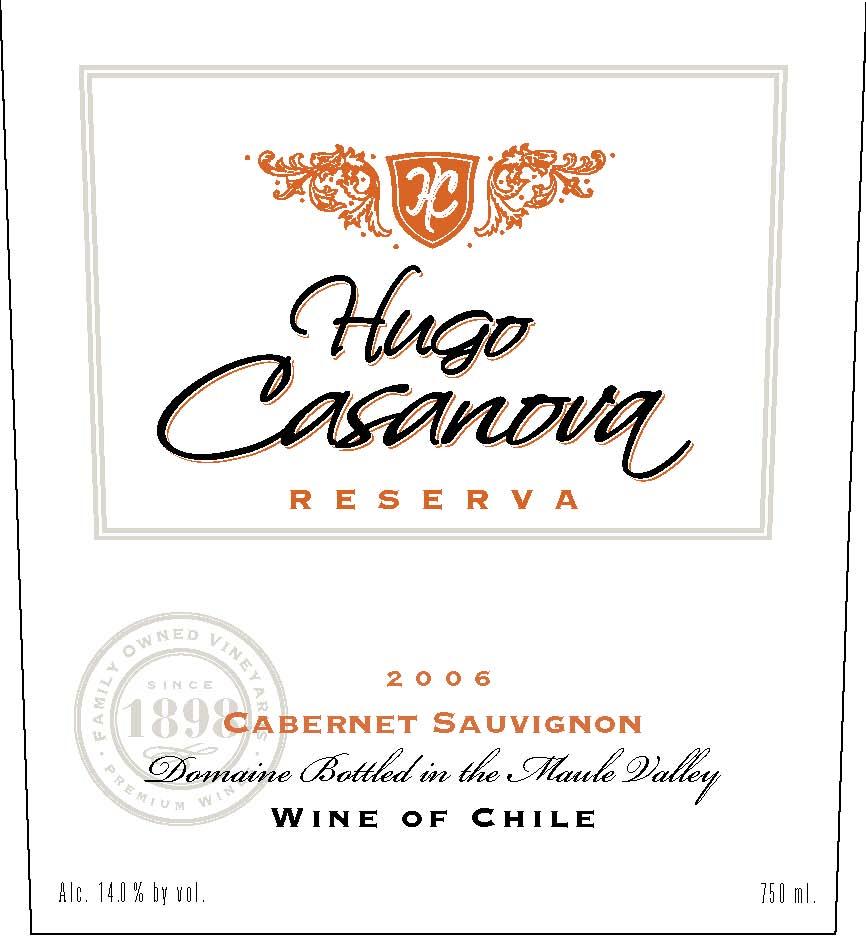2006 Maule Valley Cabernet Sauvignon
Hugo Casanova Reserva is a captivating expression of Cabernet Sauvignon from the renowned Maule Valley region. This 2006 vintage showcases a rich red color that is both inviting and alluring. On the palate, it presents a full-bodied profile, complemented by high acidity that adds a lively and refreshing quality. The fruit intensity is prominent, with ripe blackcurrant and berry notes that dance harmoniously with subtle hints of spice and oak. The tannins are notable, offering structure and depth while ensuring a smooth finish. This wine is beautifully dry, making it an excellent choice for pairing with hearty dishes or enjoying on its own. With its exceptional craftsmanship and character, Hugo Casanova Reserva is truly a wine to savor.
Hugo Casanova Reserva is a captivating expression of Cabernet Sauvignon from the renowned Maule Valley region. This 2006 vintage showcases a rich red color that is both inviting and alluring. On the palate, it presents a full-bodied profile, complemented by high acidity that adds a lively and refreshing quality. The fruit intensity is prominent, with ripe blackcurrant and berry notes that dance harmoniously with subtle hints of spice and oak. The tannins are notable, offering structure and depth while ensuring a smooth finish. This wine is beautifully dry, making it an excellent choice for pairing with hearty dishes or enjoying on its own. With its exceptional craftsmanship and character, Hugo Casanova Reserva is truly a wine to savor.




